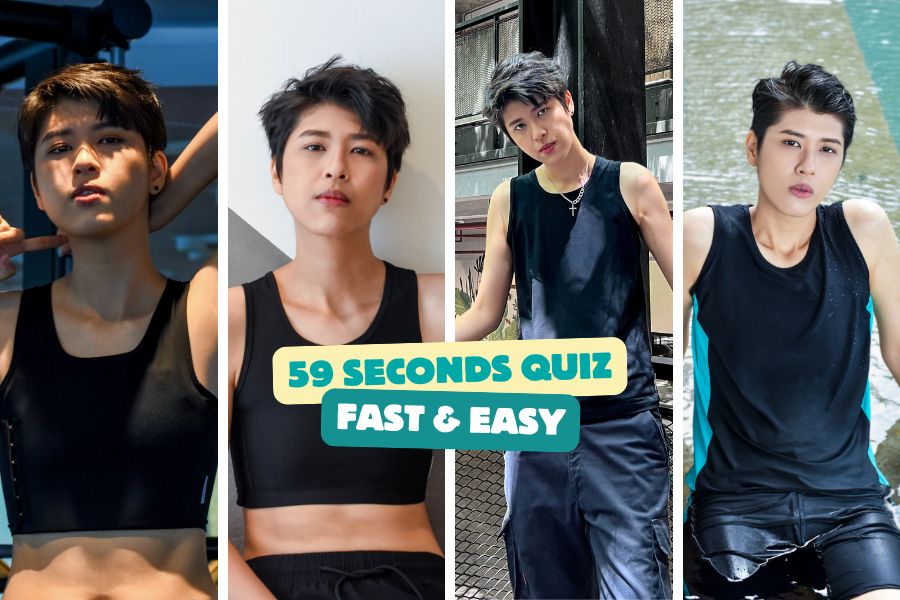For many transgender men, nonbinary individuals, and gender-nonconforming people, body dysphoria is a deeply personal and often challenging experience. Dysphoria—particularly chest dysphoria—can manifest as discomfort, anxiety, or distress related to how one's body appears or is perceived by others. It’s a feeling of being misaligned with one’s physical self, and for those who experience it, it can impact everything from daily routines to mental health.
Chest binders have emerged as one of the most powerful tools to combat chest dysphoria. By flattening the chest, binders help align physical appearance with gender identity, offering relief, confidence, and a sense of empowerment. But while binders can be life-changing, it’s important to approach their use thoughtfully, with safety and self-care in mind.
In this blog post, we’ll explore the connection between chest binders and body dysphoria, how binders provide relief, and how to use them safely to improve your quality of life.

What Is Body Dysphoria?
Body dysphoria, or gender dysphoria, refers to the discomfort or distress a person feels when their physical body doesn’t align with their gender identity. It’s a deeply personal experience that can vary widely from person to person, but for many, chest dysphoria is one of the most common and difficult aspects to navigate.
Signs of chest dysphoria may include:
- Avoiding mirrors or reflections to avoid seeing the chest.
- Feeling discomfort or anxiety about the size or shape of the chest.
- Choosing clothing to hide or minimize the chest, such as baggy shirts or multiple layers.
- Feeling distressed when misgendered because of the appearance of the chest.
- Experiencing anxiety in social or public spaces due to fear of being perceived incorrectly.
Chest dysphoria can affect a person’s mental health, self-esteem, and daily life. For many, finding ways to manage or alleviate this discomfort is essential to living authentically.

How Chest Binders Help Alleviate Dysphoria
Chest binders provide a way to flatten the chest, creating a more masculine or androgynous appearance. For people with chest dysphoria, wearing a binder can bring immediate relief and reduce the emotional and physical stress caused by dysphoria.
1. Physical Alignment
For many, seeing a flat chest in the mirror is a moment of affirmation—a visual representation that aligns their physical body with their gender identity. This alignment can significantly reduce dysphoria and improve confidence.
2. Improved Comfort in Clothing
Chest binders make it easier to wear clothing that aligns with one’s style and gender identity. Fitted shirts, button-ups, or tank tops often feel more comfortable and affirming with a flatter chest.
3. Boosted Mental Health
By reducing dysphoria, chest binders can improve overall mental well-being. Feeling more at ease in your body and more confident in social settings can have a ripple effect, reducing anxiety and improving self-esteem.
4. Increased Freedom in Social Spaces
Chest binders can provide a sense of security and comfort in public spaces, allowing individuals to move through the world with less fear of being misgendered or perceived incorrectly.

The Emotional Impact of Using a Chest Binder
For many people, the first time they wear a chest binder is an unforgettable experience. It’s often described as a moment of gender euphoria—a feeling of relief, joy, and alignment that comes from seeing yourself the way you’ve always wanted to be seen.
However, the emotional journey with a binder isn’t always straightforward. It’s normal to feel a mix of emotions, including:
- Euphoria: Feeling affirmed and aligned with your gender identity.
- Relief: A reduction in the distress caused by chest dysphoria.
- Anxiety: Concerns about whether the binder is noticeable to others or whether it’s being worn correctly.
- Frustration: Binding isn’t always perfect, and it may not fully eliminate dysphoria for everyone.
It’s important to approach binder use with patience and self-compassion. It might take time to find the right fit, style, or routine that works best for you.

Balancing Dysphoria Relief With Safety
While chest binders are incredibly effective at reducing dysphoria, improper use can lead to discomfort or health risks. Safe binding practices are essential to maintaining both your physical and mental well-being.
1. Don’t Overbind
- Avoid wearing a binder for more than 8 hours a day. Prolonged compression can strain your chest and lungs.
- Take breaks whenever possible, especially if you’re wearing a binder daily.
2. Listen to Your Body
- If you feel pain, shortness of breath, or severe discomfort, remove your binder immediately.
- Persistent pain should be addressed with a healthcare professional.
3. Never Sleep or Exercise in a Binder
- Sleeping in a binder restricts your body’s ability to expand and rest.
- Physical activity, especially strenuous exercise, requires full lung capacity and freedom of movement. Use alternatives like sports bras or compression tops designed for activity.
4. Use the Right Size
- Always follow the manufacturer’s sizing guide when choosing a binder. Never size down for extra compression—it’s unsafe and can cause rib bruising or other injuries.
5. Take Care of Your Binder
- Wash your binder regularly to prevent skin irritation from sweat or bacteria.
- Rotate between binders if you wear them frequently, giving each one time to rest and recover.

Alternatives to Binding
While binders are a powerful tool, they’re not the only way to manage chest dysphoria. If binding isn’t an option for you, consider these alternatives:
- Layering Clothing: Loose or layered clothing can minimize the appearance of the chest. Button-up shirts, hoodies, or jackets are great options.
- Sports Bras: High-compression sports bras can provide some flattening without the same level of restriction as a binder.
- Top Surgery: For those who have access and feel ready, top surgery (chest masculinization surgery) can provide a permanent solution to chest dysphoria.

Building a Support System
Navigating body dysphoria can be an emotional journey, and it’s important to have a support system in place. Consider connecting with:
- LGBTQ+ Communities: Online forums, social media groups, or local LGBTQ+ organizations can provide understanding and encouragement.
- Therapists: Working with a therapist who specializes in gender identity can help you process dysphoria and develop coping strategies.
- Friends and Family: Supportive loved ones can make a huge difference in helping you feel seen, affirmed, and valued.
The Power of Self-Compassion
While chest binders can provide immense relief, it’s important to remember that they’re just one tool in your journey. Managing body dysphoria isn’t always easy, and some days may feel harder than others. During those moments, practicing self-compassion is key.
Remind yourself:
- Your dysphoria doesn’t define you.
- You are valid, worthy, and deserving of love and respect—no matter what your body looks like.
- Progress is a journey, and it’s okay to take things one step at a time.
Chest binders are an incredible tool for managing chest dysphoria, offering relief, alignment, and a boost in confidence. They’re a way to reclaim your body, express your identity, and navigate the world with greater ease.
However, binders are only part of the picture. Whether you choose to bind, layer clothing, or explore other options, what matters most is finding what works for you and prioritizing your well-being.
Remember, you’re not alone in this journey. There’s a community of people who understand and support you—and you deserve to feel comfortable, confident, and affirmed in your body.



















Leave a comment